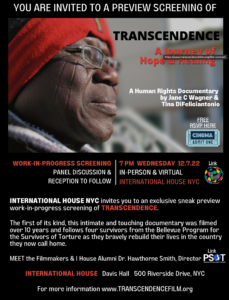Training applies only in situations where subject doesn’t have a gun, but that is the case in 40 percent of all police shootings
An increasing number of American police chiefs have an anecdote about de-escalation tactics similar to one Cambridge, Mass., Police Commissioner Branville Bard tells.
A man with a knife was recently menacing another man in Harvard Square. The responding officers didn’t immediately draw their guns or yell, “Drop the knife!” Instead they spoke calmly, Bard said, asking the man questions while carefully moving and keeping their distance from him, as other officers maintained a perimeter to keep pedestrians away. Within 30 minutes, the man handed over the knife and was taken to psychiatric treatment instead of jail.
No force was used; no one was hurt.
“Police have always been told, ‘You and your partner have to make it home every day,’” Bard said. “With de-escalation, every single body has to make it home every day.”
In an era of viral videos of police violence and rising numbers of fatal police shootings, the momentum for police de-escalation of force is growing among police leaders nationwide. On Wednesday, New York City’s police department, the largest in the United States, announced it will train all 35,000 of its officers in de-escalation, using the Police Executive Research Forum’s Integrating Communications, Assessment and Tactics approach to reduce violent encounters and injuries to both officers and citizens.
The ICAT theory rejects the long-held police tactic of meeting force with greater force, though it doesn’t apply in situations where someone has a gun. But The Washington Post’s database of fatal police shootings shows that since 2015, about 40 percent of people killed didn’t have a gun. Chuck Wexler, the longtime head of PERF and vocal proponent of de-escalation, said 40 percent is where police can make a significant reduction in the number of people killed each year.
In 2020, at least 1,021 people were fatally shot by police in the United States, the highest number since The Post began tracking police shootings.
“If you want to get at the heart of police reform,” Wexler said, “it’s the use-of-force issue. It’s not about the homeless, or the schools or qualified immunity. It’s about all these ‘lawful but awful’ shootings, that 40 percent of people who don’t have guns. Cops are doing what they’re trained to do. And for New York, that’s a department that wants to be at the forefront.”
Sgt. John Flynn, the head of the New York Police Department’s Emergency Service Unit, noted that police tactical teams have been using “time and distance” approaches to critical situations for years, gathering intelligence, setting up perimeters and establishing lines of communication with targets rather than blasting right into volatile situations. “We’re creating more options for responding officers,” Flynn said. “That’s really what this is about, taking these same techniques we’ve been using and giving them to the patrol officers.”

New York police have been heavily criticized for the fatal shootings of unarmed civilians such as Amadou Diallo in 1999 and Sean Bell in 2006. But the department was also an early leader in prohibiting officers from firing at moving vehicles, which helped reduce NYPD’s total number of shootings from 994 in 1972 to fewer than 100 by 2010.
For officers long trained in the “use-of-force continuum,” the fear is often expressed that not using force will get them wounded or killed. “Actually, the opposite is true,” said New York Assistant Police Chief Kenneth Corey, the head of training for the department. “That’s what all the studies have proven. If we can reduce incidents in which we have to use force, it keeps everyone safer, not just the citizens but the officer. We’re not taking any tools out of the toolbox. We’re adding tools to it.”
Corey referred to a study released last fall by University of Cincinnati criminologist Robin S. Engel, funded by the International Association of Chiefs of Police (IACP) and the Center for Police Research and Policy. The study examined the Louisville Metro Police Department before and after it received PERF’s ICAT training in de-escalation and found 28 percent fewer use-of-force incidents by officers, 26 percent fewer injuries to citizens and 36 percent fewer injuries to officers.
“These significant reductions in force and injuries occurred above and beyond observed changes in arrest patterns,” Engel said. Louisville police averaged 51 use-of-force incidents per month from 2010 through 2014, 40 per month from 2015 through 2018 and then about 30 per month in 2019 and early 2020.
The Fraternal Order of Police, the nation’s largest police union, still isn’t fully convinced.
“We strongly support the concept of de-escalation,” said Jim Pasco, the FOP’s executive director. “But the draconian degree to which PERF would have officers de-escalate poses a problem not just for officer safety but for public safety. It requires officers, rather than to minimize the threat, to prolong it in the hope the threat can be minimized. While that is sometimes true, there will always be circumstances where action needs to be taken. And that’s not necessarily the outcome PERF wants.”
Wexler said about 700 police departments have received some or all of the ICAT training and that all 35,000 officers in New Jersey are undergoing the training now, at the direction of state Attorney General Gurbir Grewal.
The ICAT approach counsels officers to move cautiously upon arrival, communicating more with dispatchers to obtain additional information about the subject, rather than immediately taking charge of a scene where someone isn’t wielding a gun. The goal is to start a conversation, to calm the subject rather than confront them, while maintaining a safe distance from them and waiting for more resources rather than promptly seeking an arrest. PERF has also added new modules on reducing “suicide by cop” with similar tactics, and intervening in situations where other officers may be using force inappropriately.
“Cops don’t want to hear about retreat,” said New York’s Flynn. “We don’t retreat. We reposition. We constantly make adjustments. Tac teams do this around the world. We’ve just struggled with taking this to patrol officers.” Corey said it would take about two years for the entire NYPD to go through ICAT training and that commanders would closely monitor the impact it had citywide.
In Volusia County, Fla., the impact of ICAT training was almost immediate, Sheriff Mike Chitwood said. In 2017, Volusia sheriff’s deputies shot six people. “They were all lawful,” Chitwood said, “but some of them were just awful,” echoing a sentiment voiced by Wexler, former New York police commissioner Bill Bratton and others that some legally justified shootings don’t have to happen.
So in 2018, the entire Volusia sheriff’s office received ICAT training. By the end of 2019, Chitwood said, “our use of force dropped 50 percent, injuries to deputies and arrestees also dropped 50 percent, and crime still dropped double digits.” County statistics show that in 2020, deputies fired their weapons only twice, and one deputy who used a chokehold was fired. Volusia is now giving “tactical de-escalation medals” to deputies who resolve situations without force, and Bard said he is doing that in Cambridge too.
“I just think it’s common sense,” Chitwood said of de-escalation. He said the training is “there for everybody to see, touch, and it becomes part of your culture. It’s something you can use over and over again.”




